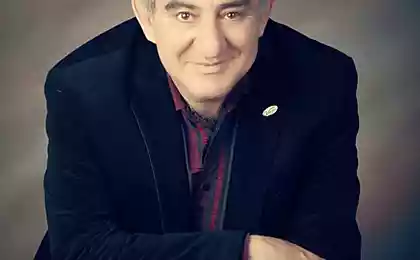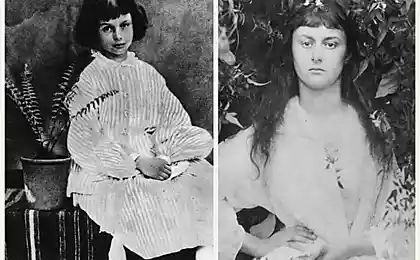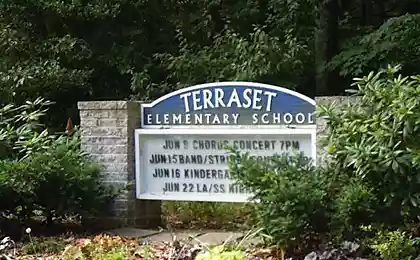623
"Married — 're fired!" and other rules of life teachers of the XIX century
Flipping through old Newspapers and school statutes to see what requirements you had to fulfill teachers 100 years ago, and the schools at that time were different from today's.
"Rules of life" for teachers of the late nineteenth century
One American Charter, which relates to 1872, contains a list of rules of conduct for teachers in secondary schools.
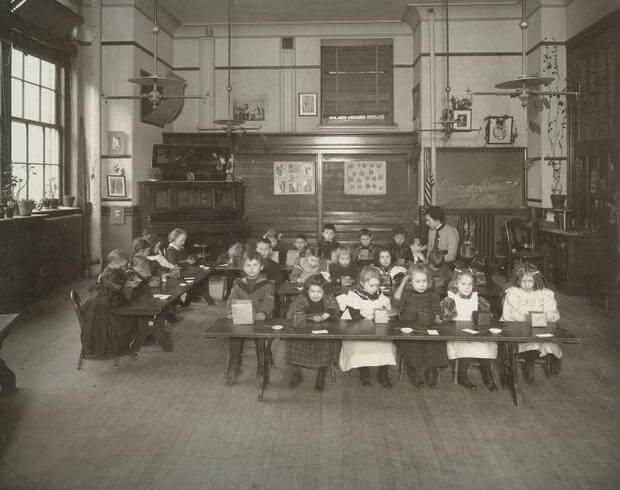
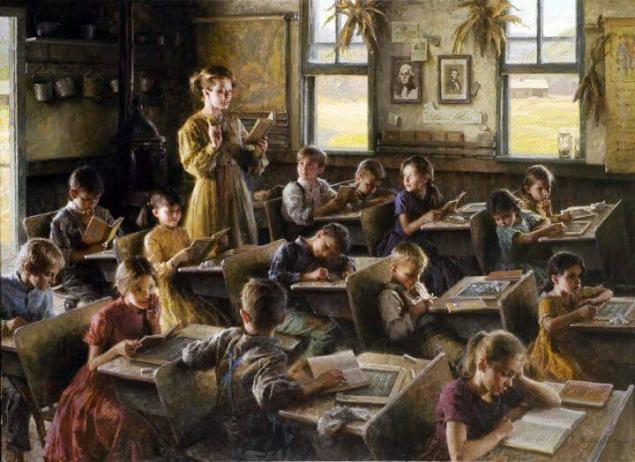
What was to do. Other similar lists, 1915, includes things to do which are not recommended under pain of suspension. It is easy to notice that the prescriptions are addressed to ladies in the twentieth century, the gender ratio among teachers has shifted so that women became more.
So, if you are a teacher of the early twentieth century, then you are strictly prohibited:
In the same list, the teachers were instructed to wear at least two petticoats and observe a curfew to be at home between 20:00 and 6:00.

Strictly speaking, these lists are hard to admit real evidence since documentary evidence they have not. However, the "statutes" were exhibited under glass in many museums in North America, claiming that the rules were formulated in their district. Note that these lists appear in magazines, at least since the 1930-ies — even then, the publication was offered to educators to compare "as it was" and "became".
Most likely, the degree of certainty of these facts is about the same as the fun facts of today who post on social media.
However, reading American and English classics of the time (for example, history about the school in "Tom Sawyer" or about the lives of governesses in "Jane Eyre"), it is possible to believe that similar statutes could exist, even if specific documents — stylization.
By the way, in our country small and even nomadic schools exist today: there are teachers you have to shovel snow, and to try on the role of chumrabotnitsa.
Something else about the life of teachers in the 1800s
These are facts that can be found in American studies of history of education, various documents and testimonies of the time.
Teachers sometimes lived with the families of their students every week staying in the new house. Their life resembled the life of a rural doctor: the need to educate the local population and long walks. How did the doctors in the Russian province, our compatriots probably imagine on the works of Bulgakov.
One teacher from Wisconsin, wrote in 1851 about his experience of being "nomadic" home teaching:
"It was quite hard, especially during the winter and spring semester. Sometimes a week in a row I had a very comfortable room. And next week I've got a bedroom where the cracks were flying snow, and sometimes I found him in bed. Somewhere I had flannel sheets, but somewhere cotton. But the most unpleasant — walks on water and snow. I've been suffering from colds and persistent cough".
That was the provincial education XIX century. However, teachers did not give up and continued to carry on education even through the Blizzard and snowstorm.
Also interesting: Geoffrey Canada: Our failing schools
Michael Ellsberg: the Modern model of education does not work
And we are confident that the vocation must generate income and also be as comfortable as possible for every qualified person. And, of course, well, if the Charter school can wear as many petticoats as you wish.published
Author: Alice Zagradska
P. S. And remember, only by changing their consumption — together we change the world! ©
Source: newtonew.com/discussions/old-school-history
"Rules of life" for teachers of the late nineteenth century
One American Charter, which relates to 1872, contains a list of rules of conduct for teachers in secondary schools.

- Teachers are expected every day to be filled with oil lamps and clean the chimney in the room for classes. In addition, they are charged with on a daily basis to bring to school a bucket of water from the well and some coal.
- After ten hours in school are allowed to spend the remaining time reading the Bible or other good books.
- Teachers can take to groom lady, which are going to make a suggestion, one evening a week. Or two, if they go to Church regularly.
- Teachers who married or were caught in inappropriate behavior, will be dismissed.
- Every teacher is strongly encouraged to defer from salary a sufficient amount to old age not to become a burden on society.
- Any teacher who smokes, drinks alcohol, frequents pool or shaves in the Barber shop, gives good reason to doubt its reliability.

What was to do. Other similar lists, 1915, includes things to do which are not recommended under pain of suspension. It is easy to notice that the prescriptions are addressed to ladies in the twentieth century, the gender ratio among teachers has shifted so that women became more.
So, if you are a teacher of the early twentieth century, then you are strictly prohibited:
- to visit the ice-cream in the centre of the city;
- to travel outside the city without permission from the chairmen of the Board;
- to dye the hair;
- dress in bright colors;
- to ride in the stroller or car with a man unless he is your father or brother;
- wear dresses that reveal your ankle more than 2 inches.
In the same list, the teachers were instructed to wear at least two petticoats and observe a curfew to be at home between 20:00 and 6:00.

Strictly speaking, these lists are hard to admit real evidence since documentary evidence they have not. However, the "statutes" were exhibited under glass in many museums in North America, claiming that the rules were formulated in their district. Note that these lists appear in magazines, at least since the 1930-ies — even then, the publication was offered to educators to compare "as it was" and "became".
Most likely, the degree of certainty of these facts is about the same as the fun facts of today who post on social media.
However, reading American and English classics of the time (for example, history about the school in "Tom Sawyer" or about the lives of governesses in "Jane Eyre"), it is possible to believe that similar statutes could exist, even if specific documents — stylization.
By the way, in our country small and even nomadic schools exist today: there are teachers you have to shovel snow, and to try on the role of chumrabotnitsa.
Something else about the life of teachers in the 1800s
These are facts that can be found in American studies of history of education, various documents and testimonies of the time.
- School in the nineteenth and early twentieth century often was a house to one room, where both engaged students of all ages. In America they were called "one room schoolhouses".
- About the same look of a rural school in the Russian Empire. Such "study house" was designed for local children who lived at a distance of 5-6 kilometers. Many students every day were on foot, and it is only in one direction.
- Teachers also had to make long walks to get to work, so many people have had a stout stick, which in the case to fend off the dogs (or to threaten the pupils). However, sometimes teachers lived in schools.
- No pens and pencils in ordinary schools were not found, even feathers with ink was a luxury. Students treated personal slate boards and chalk, and the teacher wrote on the Board a little more.
- Sometimes older students helped teach younger ones. According to the rules Lancasters system that is widely used for literacy and numeracy, those who were already better received assignments directly from the teacher and then passed on to those who were younger or did worse.
- Academic year 120 years ago was shorter than it is now. According to the U.S. Department of education, students attended school approximately 132 days of the year. This figure has varied depending on when children were needed to help the family harvest.
- The school day usually started at 9 am and finished by 14:00 or 16:00. In the middle of the day was the hour lunch break.
- Attendance in schools was approximately 59%.
Teachers sometimes lived with the families of their students every week staying in the new house. Their life resembled the life of a rural doctor: the need to educate the local population and long walks. How did the doctors in the Russian province, our compatriots probably imagine on the works of Bulgakov.
One teacher from Wisconsin, wrote in 1851 about his experience of being "nomadic" home teaching:
"It was quite hard, especially during the winter and spring semester. Sometimes a week in a row I had a very comfortable room. And next week I've got a bedroom where the cracks were flying snow, and sometimes I found him in bed. Somewhere I had flannel sheets, but somewhere cotton. But the most unpleasant — walks on water and snow. I've been suffering from colds and persistent cough".
That was the provincial education XIX century. However, teachers did not give up and continued to carry on education even through the Blizzard and snowstorm.
Also interesting: Geoffrey Canada: Our failing schools
Michael Ellsberg: the Modern model of education does not work
And we are confident that the vocation must generate income and also be as comfortable as possible for every qualified person. And, of course, well, if the Charter school can wear as many petticoats as you wish.published
Author: Alice Zagradska
P. S. And remember, only by changing their consumption — together we change the world! ©
Source: newtonew.com/discussions/old-school-history



